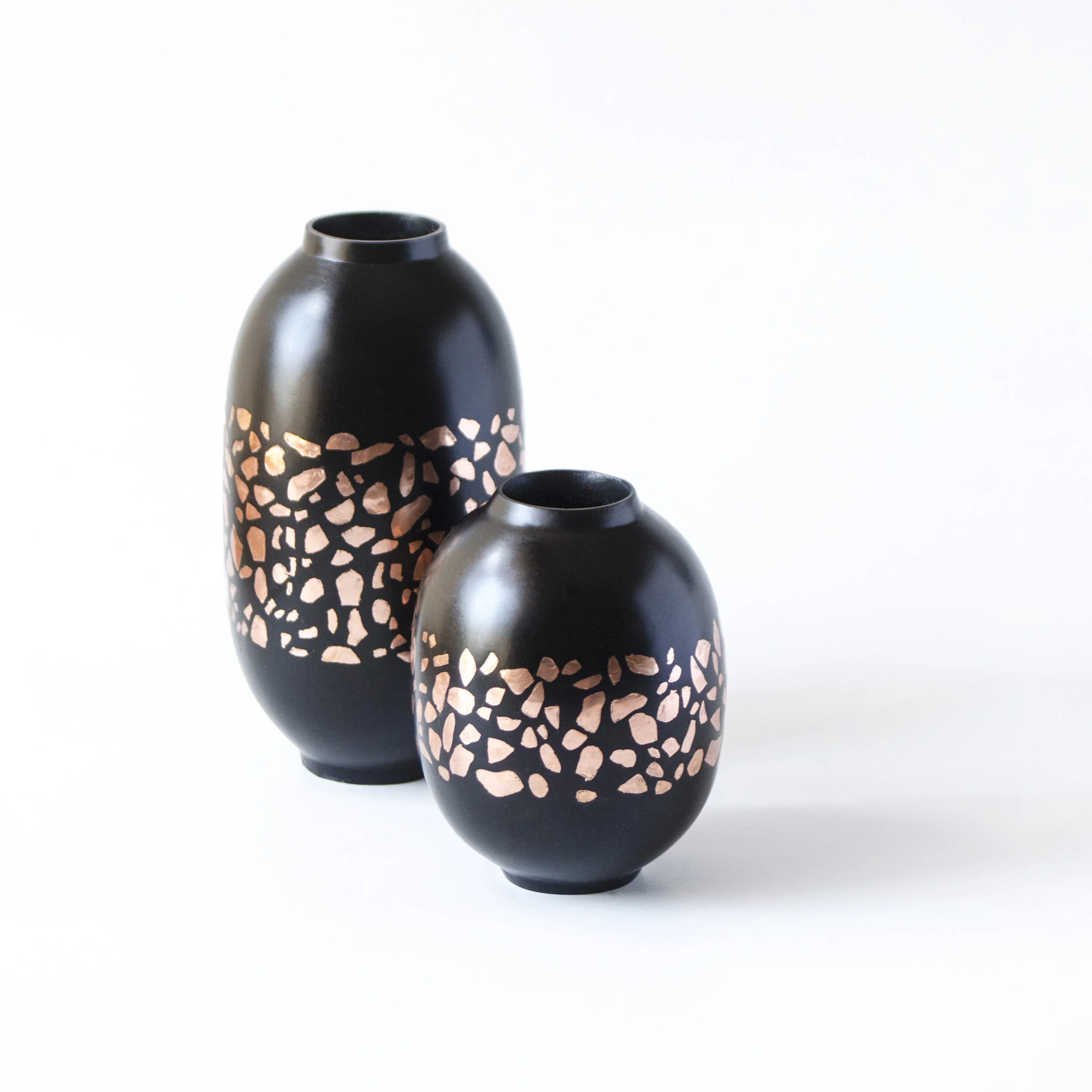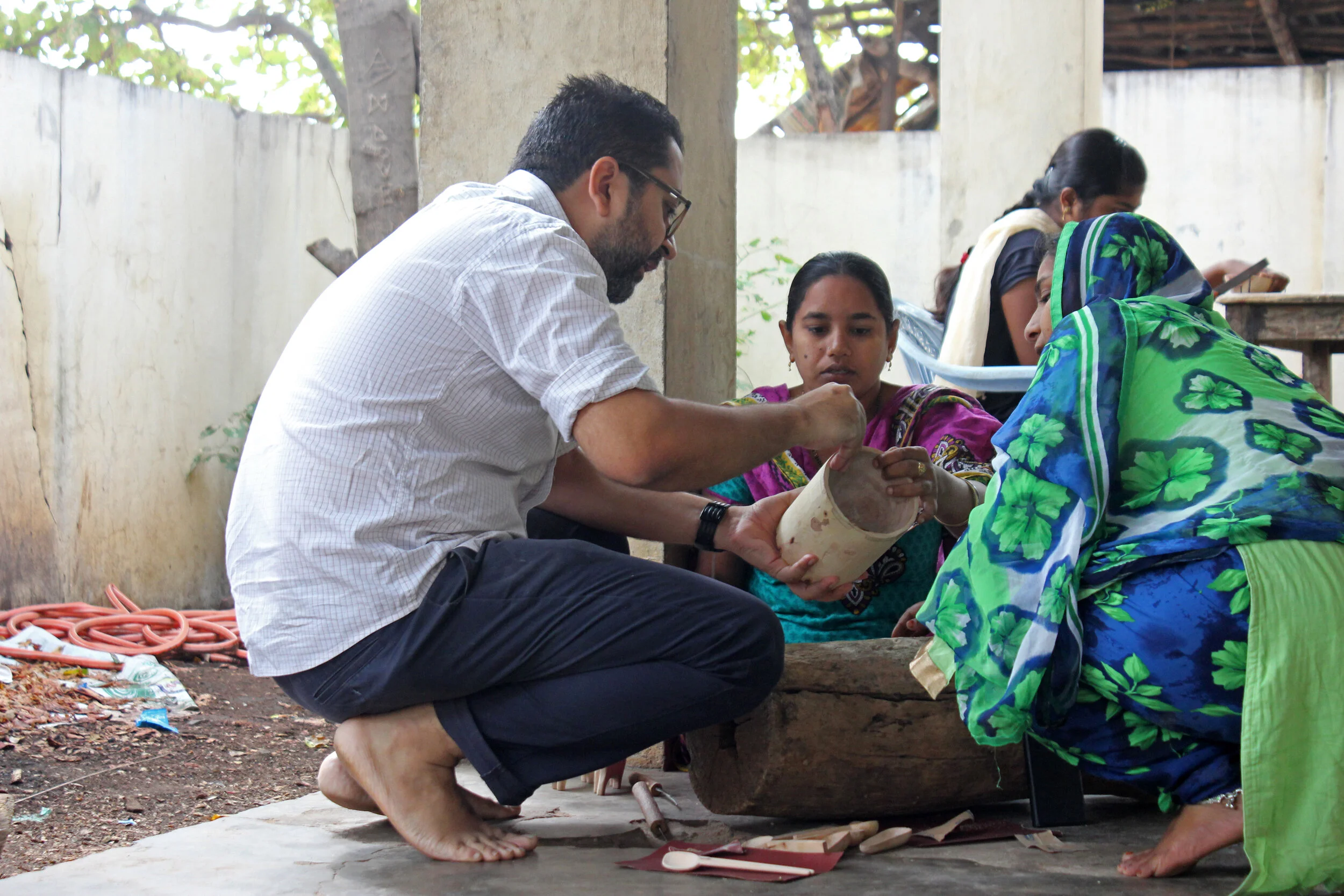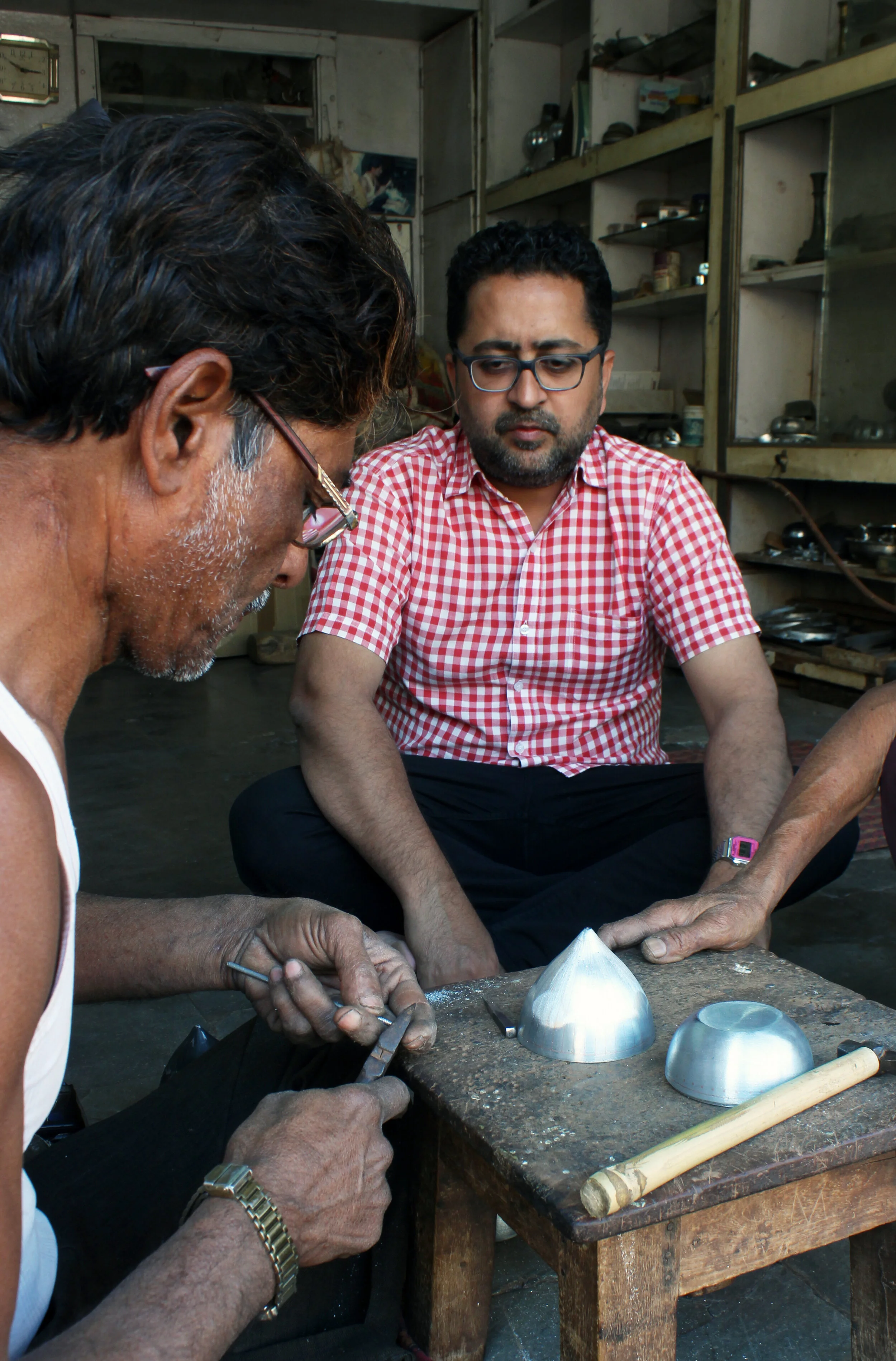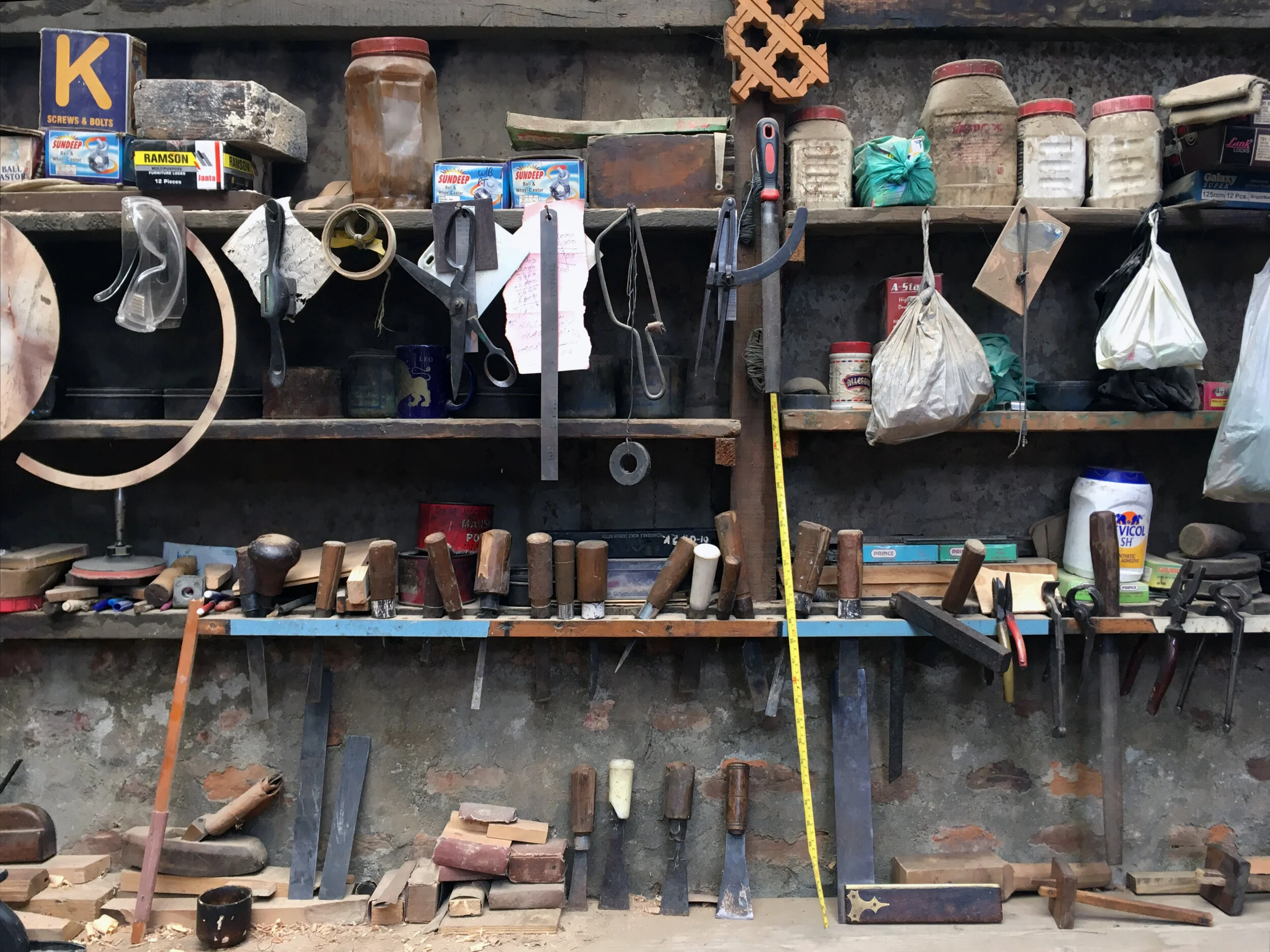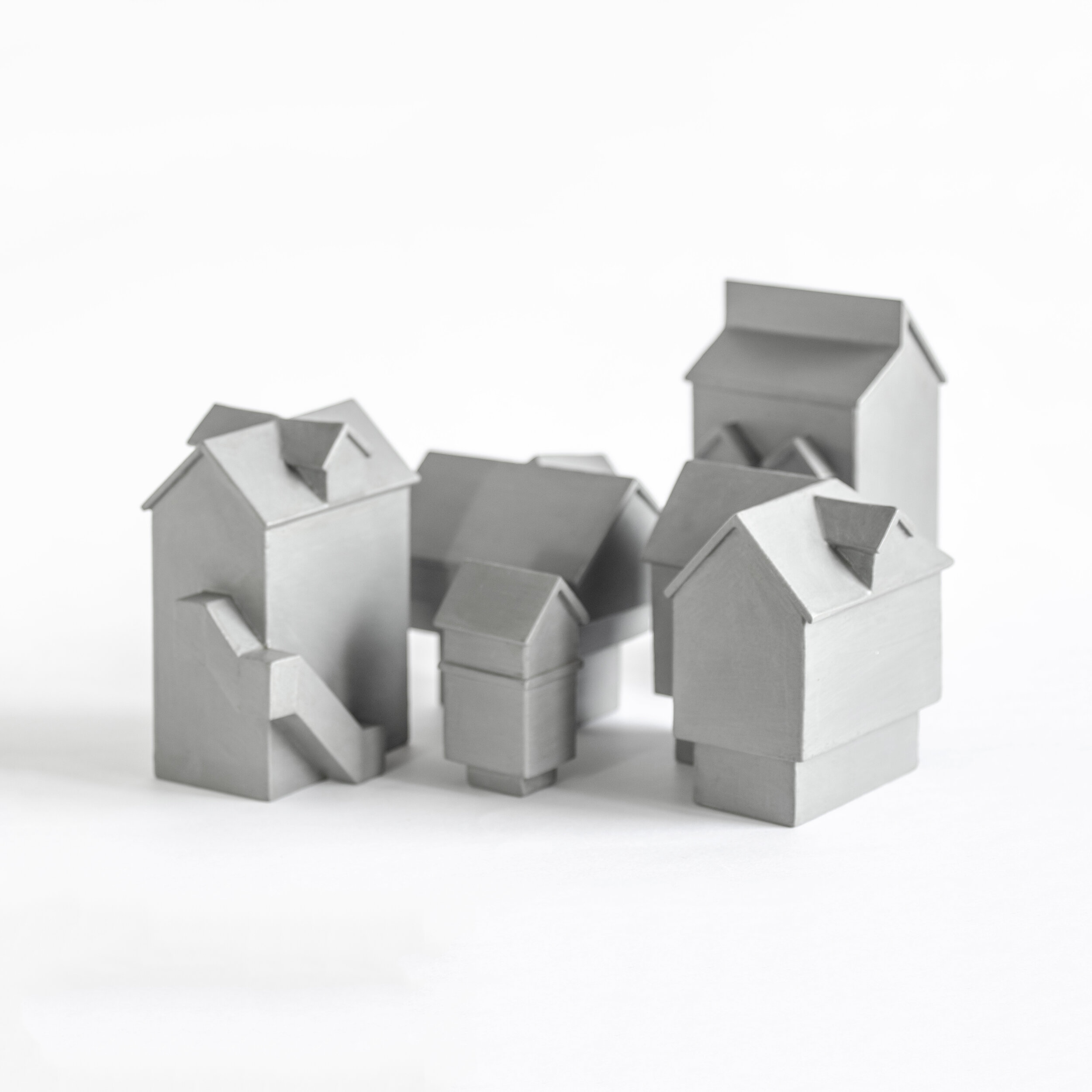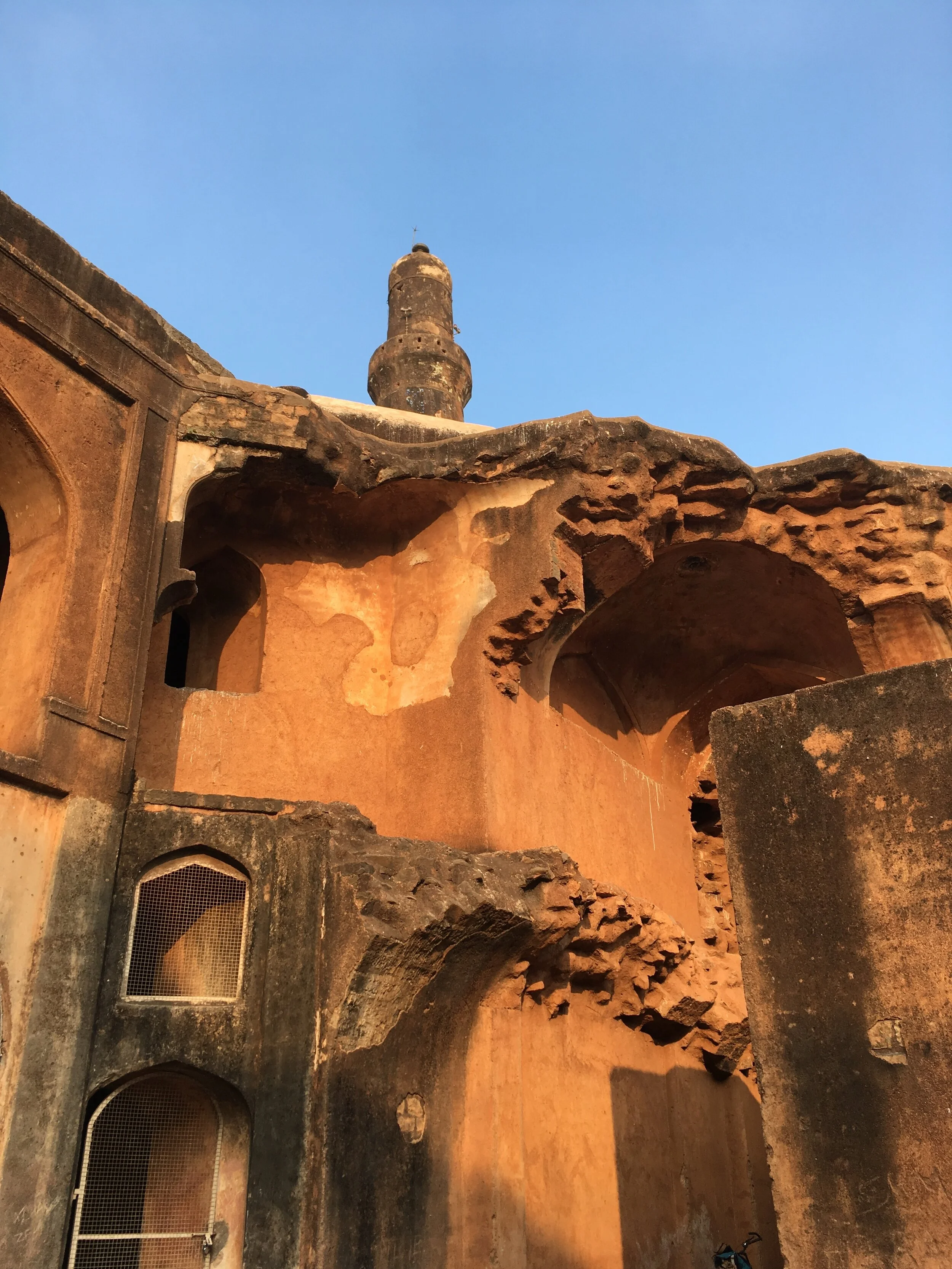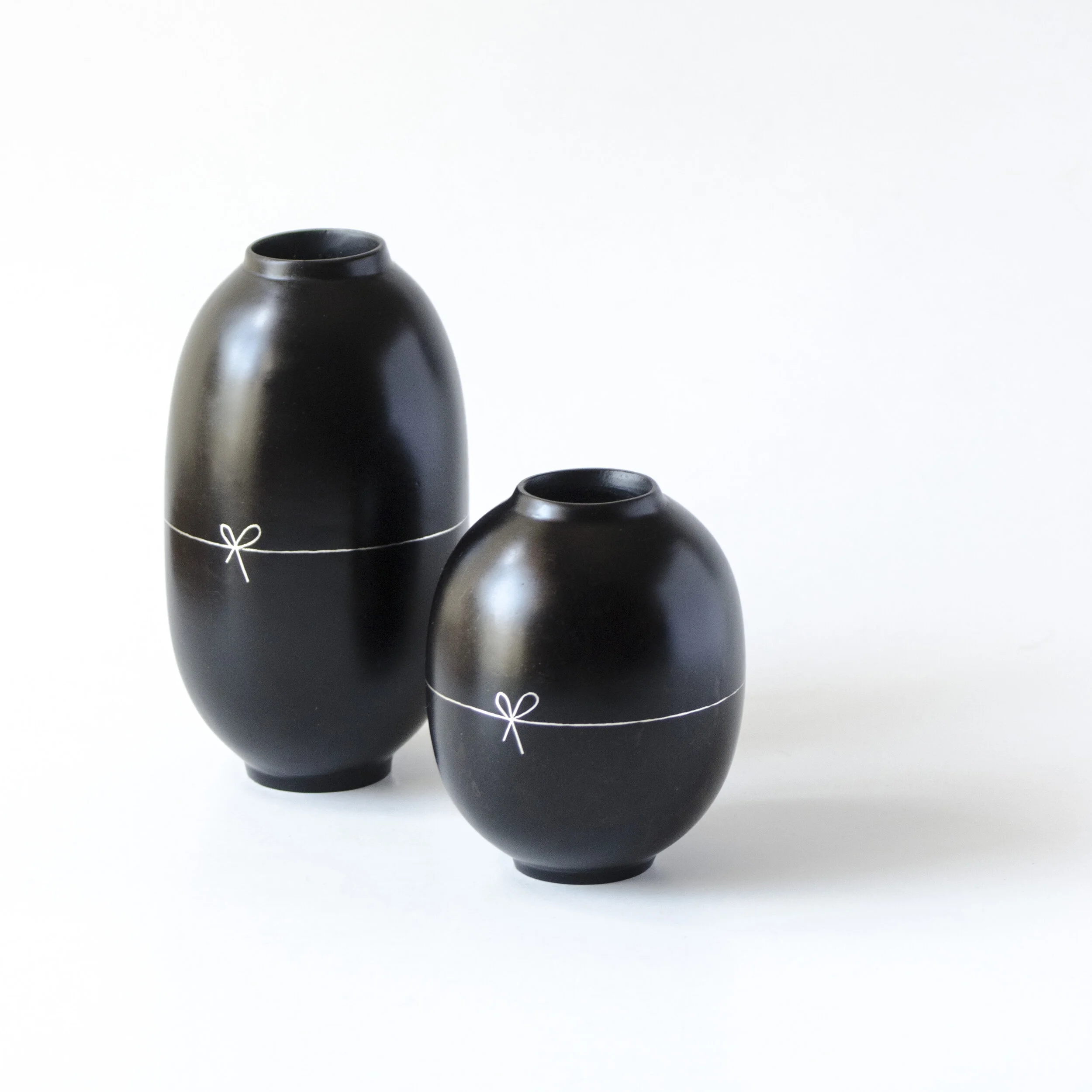Traditional techniques inform modern consumer products — all within the framework of the Indian aesthetic.
Harpreet Padam of Unlike Design Co. explains a detail to some of the artisans he collaborates with.
Scrolling through Instagram (one of my favorite hobbies), I was instantly impressed by the well-curated feed of Harpreet Padam (@generalaesthetic). It features images of places and objects found or designed by him.
Recently, I saw a post featuring an article Harpreet wrote for Big Little Things, a magazine that celebrates thoughtful design and living. In the article, Harpreet describes his lifelong love for traditional Indian handicrafts and his collection of childhood objects filled with special memories and their influence on his designs.
“A better, exclusive understanding of Indian-ness is something I really strive for through my work.”
Harpreet is the co-founder of Unlike Design Co., and his creations include the Petal series of tea scoops that have an organic feel to them and were developed in collaboration with woodworkers from Udayagiri, Andhra Pradesh, India. His Bidriware is produced by craftspeople in Bidar, Karnataka. And I’m particularly partial to the miniature houses inspired by the vernacular architecture of Srinagar, Kashmir.
We were thrilled to connect with Harpreet, who shared a bit about his influences, design background, favorite objects and the enduring legacy of artisans. –Duke
Tell us about your design background.
Honestly, the impulse to study design came about for me by a poster I found in an apartment that the previous tenant, a furniture designer, had left behind. It was a neat collage of industrial design works by the French architect and designer Marc Held. I still have the poster and keep in touch with Marc every now and then.
I went on to study at the then very respected accessory design department of the National Institute of Fashion Technology in New Delhi.
After graduating, I worked for six years as a designer, then design head at a fashion accessory firm in Bangalore. It was a wonderful team, and I got the opportunity to design jewelry, home products, store windows, brochures and even a store interior.
Eventually, I was drawn to packaging and graphic design for Indian fashion brands. My partner, Lavanya, and I established our studio Unlike Design Co. — first in Bangalore, and now in New Delhi. We do a mix of projects, ranging from home accessories, craft-based objects, graphics and packaging. Both of us also teach at various design schools across India.
Harpreet looks to traditional Indian culture to create a new, non-Westernized take on contemporary design.
How would you describe your design philosophy?
I look at design as very closely related to business and culture. The experience and understanding of the client as well as the softer nuances within the lives of the user influence my thinking greatly.
A better, exclusive understanding of Indian-ness is something I really strive for through my work.
I am also always thinking about how the words “modern” and “contemporary” apply to India and our people. The way designers like myself have been trained and the early influences we have developed as a result of that, our understanding of these words has been shaped largely from a Western viewpoint. My mind struggles to think afresh as an Indian living and working amongst the Indian masses — I think this struggle forms an important part of my design philosophy.
What are some of your favorite objects that you’ve picked up on your travels? Why are these important to you?
I really like this set of wire puzzles we picked up on the Ganges riverside in Varanasi. The man who sold them used to make them himself. The puzzles range from simple to sheer mind-benders. On subsequent visits, I couldn’t find the man again, and the pieces I had bought earlier became more special.
Harpreet picks up keepsakes on his travels, like these wire puzzles bought along the Ganges in Varanasi.
Then there is this block of wood which I found in a wood turner’s workshop in Kashmir. It’s some sort of a shaping tool, though the artisan was using it as a seat. According to the family, it is very old and made of a rare hardwood exclusive to Kashmir — I forget the name now. I think I enjoyed its multipurpose perception and its naturally aged look.
Hapreet found this shaped wood block at a workshop in Kashmir.
There are so many more things, found by the roadside, in hardware stores, in people’s homes, rejects during workshops. Lavanya and I collect a lot of such things, get really attached to them, and end up filling cupboards and boxes to the brim.
Artisan Khatoon Bi uses her hands as well as her feet to carve a Petal teaspoon for the Udayagiri wooden cutlery collection.
Who are some of the artisans you work with?
At the moment, I am working with embroiderers, woodcarvers and papier-mâché makers in Kashmir. I also work with a family of Bidriware makers and a community of women cutlery carvers in South India.
A Kashmiri woodcarver’s workshop
What appeals to you about traditional handicrafts?
I enjoy the struggle of aiming to create a kind of new relevance. In the past, a lot of traditional handicrafts were seamlessly integrated into the lives of their users — through intelligent combinations of their function, appearance, significance. Artisans nowadays are a bit detached from a firsthand understanding of consumer lifestyles — sometimes even within their local environments.
I like the attempt of acting to bridge this understanding — just nudging and guiding a bit. It’s magic to witness an artisan thinking for him- or herself about a new product. And they do it more intuitively than designers. It’s also design, I guess, helping someone with the confidence to think for themselves.
Master craftsman Abdul Rauf works with Harpreet on the Bidriware product line.
Another important thing for me is changing perceptions about traditional handicrafts, especially for young design students, who find the whole subject boring and stuffy. I think I’m able to achieve this to some extent when I teach my craft-based design course at the National Institute of Fashion Technology.
Prototypes for Unlike’s Srinagar Houses
How have you given traditional handicrafts a modern twist, as in your Srinagar Houses miniatures?
I didn’t have to do much more than spot significant details of old Srinagar houses that stood out for me. And this happens naturally when you visit Kashmir — the older architecture stands in sharp contrast to the more universal style of building prevalent now.
So I simply made small models of what I saw, and the artisans improved upon it with their own thoughts. Though we did attempt to paint details of windows and brickwork onto the houses, eventually we left them gray.
The minimalism of the Srinagar Houses lends them a modern feel.
I was inspired to do this by a conversation with one of the traditional artists, who was joking when he said it’s better not to paint windows and doors since the Kashmiri people are almost always under curfew and house arrest. I think that stark grayness, coupled with strong architectural features, gives them a modern feel.
Architecture like this in Bidar helped inspired Unlike’s Bidriware.
What have been your biggest influences as an artist?
Most of all, I think it’s the opportunity of traveling and meeting varied places and people. And then I think it’s also an equilibrium of mish-mash from films, magazines, books, writings and work of designers, artists, filmmakers and the like.
I spent my late school years studying in and around Corbusier’s Chandigarh and that did affect my view on architecture and design, in a deep way that’s hard to describe.
I also really admire the writings of the late Italian designer Ettore Sottsass and the work of Vico Magistretti, his fellow designer of the time.
And then Indian cinema of the 1980s and early ’90s — such films as Ek Doctor Ki Maut by Tapan Sinha, Aakrosh and Ardh Satya by Govind Nihalani, Mathilukal by Adoor Gopalakrishnan and Sadma by Balu Mahendra. I wish my work could imbibe that level of starkness in thought, the honesty and courage to address issues head on — even in commercial products and the way they are made.
Traditional techniques are used to create the Convention vases in Unlike’s Bidriware line.
Explain some of your favorite traditional techniques, and how you’ve applied them to your work, as in your Bidriware series.
In Bidriware, I think I’m still learning more about the possibility of techniques. In my last extended interaction, I enjoyed learning about the hollow-core casting technique. Unlike many Bidriware objects, this technique does not weld two symmetrical halves to create a hollow object, which is a simple but crude way to do it. The method employs sand casting to achieve a completely hollow form, without visible joints.
Moreover, the artisan I have been working with is extremely skilled at creating hollow molds out of solid forms — it is magic watching him employ decades of skill and dexterity in the few moments it takes to achieve this.
I used both these specialities of the artisan for a series of flower vases called Convention.
Share something that you think would only happen in India.
Oh, our roads. The astonishing synchronicity of traffic, animals and people moving in any and all directions of their choosing. I’m not sure any other country can match that.
